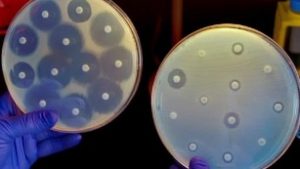Just a quick post here. There is a new CNN story that may be of interest. An antibiotic-resistant superbug will launch from the same pad where the first manned mission to the moon lifted off to be studied on the International Space Station. Source: Why NASA is sending a superbug to the space station – …
Microbes in the city Also see this blog post earlier this week: Urban Transit System Microbial Communities Differ by Surface Type and Interaction with Humans and the Environment – Tiffany Hsu – mSystems (OA) Public transit systems are ideal for studying the urban microbiome and interindividual community transfer. In this study, we used 16S amplicon and …
Recent papers on microbes of the built environment. Microbes in the hospital Prevalence of Staphylococcus aureus from nares and hands on healthcare professionals in a Portuguese Hospital – Ana Castro – Journal of Applied Microbiology ($6 to rent, $38 to own) The main goal was to estimate the prevalence of methicillin-resistant S. aureus on hands and …
A new PLoS One article from Dorado-GarcÃa et al. on the effectiveness of certain countermeasures to antimicrobial resistance shows some encouraging results. The study used MRSA levels as a positive indicator for antimicrobial resistance in Dutch veal farms. There were three methods of reducing MRSA levels in the farms that were studied: one program used protocol-driven methods, one used …
So I just saw this news story: Lawrence Tynes sues Tampa Bay Buccaneers claiming MRSA infection ended career. It seems that Tynes and some others think MRSA is lurking in the Tamba Bay Buccaneers facilities. This is yet another example of a sports league in need of a microbial ecologist. Lots of interest in Sports and …
In 2011, David Coil posted about one of our most utilized mobile built environments-the cars we drive every day (or maybe not, if we adhere to an environmentally friendly lifestyle). A small study had just come out, in which the authors had attempted to identify the bacteria and molds present in cars in different climates. As …
A recent microbe.net post discussed the use of copper as an antimicrobial to prevent infections in healthcare settings. This is not a particularly new concept, but unfortunately, the literature appears dominated by authors who received funding from the copper industry and its associations. Such industrial funding is not unique to copper and is, sadly, more …
Bacteriophage therapy relies upon viruses of bacteria to treat bacterial infections. Prior to penicillin’s discovery, bacteriophage therapy was one of the major ways to treat bacterial infections. Virologist Felix D’Herelle pioneered this method in the late 1800’s in Paris and the former Soviet Union. Most of the literature on bacteriophage therapy is from Eastern European countries, …
Paula Olsiewski recently pointed us to this article entitled “Contamination of Public Buses with MRSA in Lisbon, Portugal: A Possible Transmission Route of Major MRSA Clones within the Community.” Basically the authors found nosocomial (hospital-acquired) strains of MRSA on a number of public buses and conclude: MRSA contamination of public transport and the transfer of …
Another short post here, this time on modeling the spread of hospital-acquired bacteria. Horizontal gene transfer between bacteria is a huge problem in hospitals and these researchers have developed some models for how this process actually occurs in hospitals. They’ve applied their techniques in a couple of real-life situations with interesting results. They found for …

